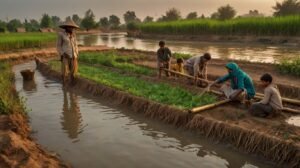
Introduction
In recent years, Pakistan has faced a barrage of climate disasters, with devastating floods being among the most severe. The floods of 2022 and subsequent years have left millions displaced, homes destroyed, and livelihoods shattered. As the nation grapples with the aftermath, the process of recovery and rebuilding is both a challenge and an opportunity for resilience. This article delves into the impact of these floods, the personal stories of those affected, the efforts made towards recovery, and the broader implications for climate adaptation in Pakistan. For more insights on social issues and environmental challenges, visit **zaroraterishta.com**.
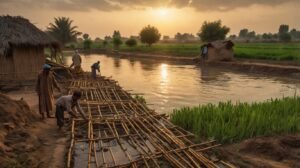
The Impact of the Floods
A National Crisis
The floods that struck Pakistan in 2022 were unprecedented in scale and intensity. According to the National Disaster Management Authority (NDMA), approximately 33 million people were affected, with over 1,700 lives lost and millions more displaced. The sheer volume of water that inundated vast stretches of land rendered entire communities uninhabitable.
In Sindh and Balochistan, the most affected provinces, fields were submerged, crops destroyed, and livestock lost. The economic repercussions were staggering, with estimates suggesting that the floods caused losses exceeding $30 billion. This disaster not only impacted immediate livelihoods but also set back years of development progress.
A Closer Look at the Statistics
The statistics paint a grim picture. In Sindh alone, nearly 2 million houses were damaged or destroyed, leaving families without shelter. The agricultural sector, which employs a significant portion of the population, faced devastating losses – approximately 5 million acres of crops were affected, resulting in food insecurity and increased prices for essential goods. The long-term implications of these losses will resonate throughout the economy for years to come.
Stories of Resilience
The statistics tell a grim story, but behind each number is a human experience. Take the case of Fatima, a mother of three from Sindh. When the floods hit, her home was swept away, along with all her belongings. “I was terrified as the water rose around us,” she recalls. “We had to flee with nothing but the clothes on our backs.”
Fatima and her family found temporary shelter in a makeshift camp set up by local NGOs. “It was hard; we had no privacy, and the conditions were rough, but we were grateful to be alive,” she reflects. Her story is just one of countless others, each illustrating the strength and resilience of individuals facing unimaginable challenges.
In another part of the country, we meet Ahmed, a farmer who lost his entire crop to the floods. “My land was my life,” he says, tears welling in his eyes. “Now, I have nothing to show for my hard work.” Despite the despair, Ahmed is determined to rebuild. “I have to for my children,” he adds, showcasing the spirit of resilience that characterizes many affected by these disasters.
Mental Health Impacts
The psychological toll of such disasters can be profound. Survivors often experience trauma, anxiety, and depression as they grapple with loss and uncertainty. Mental health services in the aftermath of disasters are crucial yet often overlooked.
Organizations like the Pakistan Red Crescent Society have initiated mental health support programs to help individuals cope with the emotional aftermath of the floods. These programs provide counseling and community support, recognizing that recovery goes beyond physical rebuilding; it also involves healing the emotional wounds inflicted by disaster.
Personal Stories of Mental Health Struggles
Consider the experience of Bilal, a 35-year-old father who lost his home and business in the floods. “Every night, I wake up feeling anxious and scared,” he admits. “I worry about how I will provide for my family.” Bilal’s story reflects the mental health struggles faced by many individuals affected by the floods, highlighting the need for comprehensive support services.
The Economic Fallout
Beyond the immediate destruction, the floods have had a cascading effect on the economy. Businesses were forced to close, and many workers lost their jobs. The agricultural sector, which is vital to Pakistan’s economy, suffered immensely. With fields submerged, farmers faced crop failures, leading to food insecurity and increased prices for essential goods.
As families struggled to meet basic needs, the poverty rate surged. According to estimates, millions were pushed back into poverty, reversing years of progress in economic development. The long-term economic implications of the floods will be felt for generations, emphasizing the urgent need for recovery and rebuilding efforts.
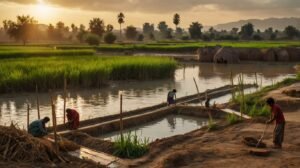
The Recovery Efforts
Government Initiatives
In the wake of the floods, the government of Pakistan, in collaboration with international organizations, launched a comprehensive recovery plan aimed at rebuilding communities and restoring livelihoods. This plan includes financial assistance for affected families, infrastructure rehabilitation, and agricultural recovery programs.
Financial Aid and Support
The government allocated significant resources for immediate relief efforts, including cash transfers to families and the provision of food and shelter. The Benazir Income Support Program (BISP) was expanded to support families directly affected by the floods, ensuring that vulnerable populations received the assistance they needed to survive.
However, financial aid alone is not enough. The recovery process requires a holistic approach that addresses the long-term needs of communities. This includes investment in infrastructure, healthcare, education, and job creation.
Infrastructure Rehabilitation
The government recognized the need to rebuild not just homes but also vital infrastructure, such as roads, schools, and healthcare facilities. Investing in infrastructure rehabilitation is crucial for restoring normalcy and ensuring that communities can rebound effectively.
In many areas, local governments have initiated programs to repair and rebuild damaged infrastructure, often in collaboration with NGOs and community organizations. This collaborative approach ensures that the needs of the community are prioritized and that rebuilding efforts are sustainable.
International Assistance
International aid has played a crucial role in Pakistan’s recovery efforts. Countries and organizations worldwide have pledged support, providing funding, supplies, and technical expertise. The United Nations launched a flash appeal for humanitarian assistance, raising millions of dollars to aid recovery efforts.
One notable initiative is the “Pakistan Flood Response Plan,” which aims to provide immediate relief and support long-term recovery. This plan focuses on rebuilding homes, restoring livelihoods, and improving resilience to future disasters.
Collaboration with NGOs
International organizations such as the World Food Programme (WFP) and UNICEF have partnered with local NGOs to facilitate relief efforts. These collaborations ensure that aid reaches those who need it most, leveraging local knowledge and networks for effective distribution.
For instance, the WFP implemented food distribution programs in the worst-hit areas, providing families with essential supplies to sustain them during the recovery process. Meanwhile, UNICEF focused on ensuring that children’s rights to education and protection were upheld, providing temporary learning spaces and psychosocial support.
Community-Led Recovery
Community resilience is at the heart of Pakistan’s recovery efforts. Local organizations and grassroots movements have emerged to lead recovery initiatives, emphasizing the importance of community involvement in rebuilding efforts.
Empowering Local Leaders
In many affected areas, local leaders have mobilized communities to take charge of the recovery process. They have organized clean-up efforts, facilitated access to resources, and supported families in rebuilding their homes. This grassroots approach not only empowers communities but also fosters a sense of ownership over the recovery process.
For instance, in the flood-affected regions of Sindh, community groups have come together to rebuild homes using locally sourced materials. “We know our needs best,” says Ahmed, a local leader involved in the rebuilding efforts. “By working together, we can create homes that are stronger and more resilient to future floods.”
The Role of NGOs and Civil Society
Humanitarian Aid and Support Services
Non-governmental organizations (NGOs) have been instrumental in providing humanitarian aid and support services to flood-affected communities. Organizations like CARE Pakistan, Oxfam, and the Red Cross have been on the ground, delivering essential supplies, healthcare services, and psychosocial support.
Health Services in Crisis
Healthcare facilities in flood-affected areas were severely impacted, with many clinics and hospitals damaged or destroyed. NGOs have stepped in to provide mobile health services, offering medical care to those in need. This includes treatment for waterborne diseases, maternal health services, and mental health support.
For example, the International Federation of Red Cross and Red Crescent Societies deployed mobile clinics to remote areas, ensuring that families had access to essential healthcare. These efforts are crucial in preventing disease outbreaks and addressing the immediate health needs of communities.
Long-Term Development Programs
In addition to immediate relief efforts, NGOs are also focusing on long-term development programs aimed at building resilience to future disasters. This includes initiatives to promote sustainable agriculture, improve water management, and enhance disaster preparedness.
Sustainable Agriculture Initiatives
Agriculture is the backbone of Pakistan’s economy, and many flood-affected families rely on farming for their livelihoods. NGOs are working to implement sustainable agricultural practices that can withstand the impacts of climate change.
These initiatives include training farmers in climate-resilient farming techniques, providing access to drought-resistant seeds, and promoting sustainable irrigation practices. By equipping farmers with the tools and knowledge they need, these programs aim to restore livelihoods and ensure food security.
Education and Capacity Building
Education is a vital component of recovery and resilience-building. NGOs are implementing educational programs to support children affected by the floods, ensuring that they can continue their studies despite the disruptions.
Supporting Children’s Education
In partnership with local schools, organizations are providing educational materials, scholarships, and psychosocial support to help children cope with the trauma of the floods. “Education is the key to our future,” says Aisha, a teacher in a flood-affected area. “We must ensure that our children have the opportunity to learn and grow.”
Additionally, capacity-building programs for local leaders and community members are essential for long-term resilience. By training individuals in disaster preparedness, risk management, and community organizing, NGOs are helping to create a network of informed and empowered citizens ready to respond to future challenges.
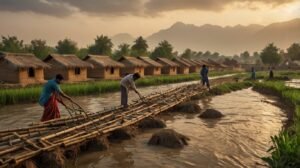
The Role of Technology in Recovery
In the digital age, technology has become an invaluable tool in the recovery process. From data collection to communication, innovative solutions are helping to streamline efforts and improve outcomes.
Data Collection and Analysis
Organizations are utilizing technology to gather data on the impact of the floods, allowing for more effective planning and resource allocation. Mobile apps and online platforms enable rapid assessments of needs, helping NGOs and government agencies respond more efficiently.
For instance, the use of drones to survey flood-affected areas has provided critical information on damage extent and accessibility. This data is vital for coordinating relief efforts and ensuring that aid reaches the most vulnerable populations.
Communication and Outreach
Social media and digital platforms have also played a crucial role in raising awareness and mobilizing support for recovery efforts. NGOs are using these channels to share stories of resilience, highlight the needs of affected communities, and engage donors.
Moreover, community members are utilizing social media to connect, share resources, and organize local initiatives. This digital networking fosters a sense of solidarity and collective action among those affected by the floods.
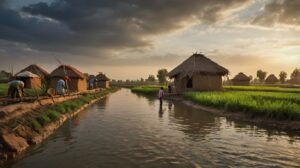
The Challenges Ahead
Climate Change and Future Resilience
The floods of 2022 are a stark reminder of the growing impact of climate change on Pakistan. As temperatures rise and weather patterns become more unpredictable, the country faces an increasing risk of future disasters.
Addressing the Root Causes
Addressing the root causes of climate change is essential for building resilience. Pakistan must prioritize climate adaptation measures, including investing in sustainable infrastructure, improving water management, and promoting renewable energy sources.
The government has initiated various projects aimed at enhancing climate resilience, such as reforestation efforts and the construction of flood barriers. These initiatives not only help protect communities from future disasters but also contribute to the overall health of the environment.
Economic Recovery and Development
The economic impact of the floods will be felt for years to come. As families work to rebuild their lives, the government and NGOs must focus on creating sustainable economic opportunities. This includes supporting small businesses, promoting vocational training programs, and fostering entrepreneurship.
Job Creation
Job creation is vital for restoring livelihoods and reducing poverty in flood-affected areas. By investing in infrastructure projects, the government can create employment opportunities while also improving essential services.
For instance, rebuilding roads, schools, and healthcare facilities can provide jobs for residents while enhancing community resilience. Additionally, initiatives that promote green jobs, such as renewable energy projects, can contribute to sustainable economic recovery.
Addressing Mental Health Needs
As communities work to rebuild their lives, addressing mental health needs will be critical. The trauma experienced during the floods can have lasting effects on individuals and families.
Expanding Mental Health Services
Governments and NGOs must prioritize mental health services in their recovery efforts. This includes increasing access to counseling, support groups, and mental health resources in communities.
Training community health workers to provide basic mental health support can also help bridge the gap in services. “We need to talk about our feelings and support each other,” says Fatima, who has become an advocate for mental health awareness in her community.
Strengthening Governance and Policy Frameworks
Effective governance is crucial for ensuring that recovery efforts are well-coordinated and that resources are allocated efficiently. Policymakers must prioritize disaster risk reduction and climate adaptation in national and local development plans.
This includes establishing clear frameworks for disaster response, enhancing early warning systems, and promoting community involvement in decision-making processes. Transparent governance is essential for building trust among communities and ensuring that recovery efforts are equitable and inclusive.
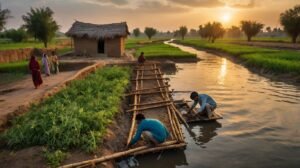
Success Stories of Recovery
Rebuilding Homes and Lives
Despite the challenges, there are inspiring stories of recovery and resilience. Many individuals and families have come together to rebuild their homes and lives, showcasing the strength of community spirit.
For example, in a village in Sindh, residents pooled their resources to construct new homes after the floods. Using locally sourced materials and traditional building techniques, they created structures designed to withstand future disasters. “We learned from our past,” says Kamal, a local builder. “This time, we are building smarter.”
Educational Initiatives
Educational institutions have also played a crucial role in recovery. Schools that were damaged in the floods have been rebuilt, with support from NGOs and the government. Efforts to provide scholarships and educational resources have ensured that children can continue their studies and regain a sense of normalcy.
One remarkable initiative is the establishment of “temporary learning centers” in flood-affected areas. These centers provide a safe space for children to learn and play while permanent schools are being rebuilt. “Education is a right, not a privilege,” emphasizes Aisha, the teacher who oversees one of these centers.
Local Businesses Rising from the Ashes
Local businesses that were devastated by the floods are beginning to bounce back, thanks to community support and government initiatives. Small business owners have received microloans and grants to help them restart their operations.
Sarah, a shop owner in a flood-affected area, shares her journey of recovery. “After the flood, I thought I had lost everything,” she recalls. “But with the help of my community and some financial support, I was able to reopen my shop. Now, I’m not just surviving; I’m thriving.”
Innovations in Sustainable Practices
The recovery process has also sparked innovation in sustainable practices. Communities are increasingly adopting eco-friendly construction methods and sustainable agricultural practices that can withstand climate impacts.
For example, some builders are using bamboo and other sustainable materials to construct homes, reducing environmental impact while also ensuring durability. Farmers are learning to implement crop rotation and organic farming methods, reducing dependency on chemical fertilizers and promoting soil health.
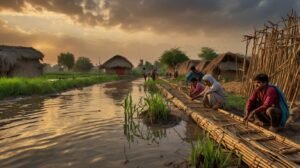
Looking Ahead: Building a Resilient Future
The Importance of Sustainable Practices
As Pakistan rebuilds, it is essential to prioritize sustainable practices that can withstand the impacts of climate change. This includes adopting eco-friendly construction methods, implementing water conservation techniques, and promoting renewable energy sources.
The government is encouraging the use of sustainable materials and technologies in rebuilding efforts. For example, solar panels are being installed in homes and schools, providing clean energy while reducing reliance on fossil fuels.
Community Engagement and Advocacy
Community engagement is crucial for ensuring that recovery efforts are effective and inclusive. Residents must have a voice in decision-making processes, allowing them to advocate for their needs and priorities.
Grassroots organizations are working to empower communities, providing training and resources to help them engage with local governments and advocate for policies that promote resilience. “We need to be part of the solution,” says Ahmed, a community leader. “Our voices matter, and we must be heard.”
The Role of Education in Resilience
Education will play a central role in building resilience for future generations. By equipping young people with knowledge about climate change, disaster preparedness, and sustainable practices, Pakistan can foster a culture of resilience.
Schools are increasingly incorporating environmental education into their curricula, teaching students about the importance of protecting the environment and preparing for disasters. “Our children are the future,” says Aisha. “We must prepare them to face the challenges ahead.”
Fostering Mental Health Awareness
As communities rebuild, it is vital to prioritize mental health awareness and support. Recovery from trauma is an ongoing process, and individuals need access to resources that help them navigate their feelings and experiences.
Community workshops that focus on mental health can provide safe spaces for individuals to share their stories and connect with others. “Talking about our struggles helps us heal,” says Bilal, who participates in a local support group.
Building Partnerships for Sustainable Development
Collaboration among government agencies, NGOs, and the private sector is essential for creating a comprehensive recovery strategy. By forming partnerships, stakeholders can pool resources, share knowledge, and implement effective solutions.
For instance, public-private partnerships can facilitate investments in sustainable infrastructure projects that benefit communities while also addressing climate challenges. Such collaborations can drive innovation and create a more resilient economy.
Conclusion
The recovery process following the devastating floods in Pakistan is a testament to the resilience of its people. While the challenges are immense, the stories of hope, courage, and community spirit shine through. As Pakistan rebuilds, it is essential to prioritize sustainable development, climate adaptation, and mental health support.
The journey of recovery is not just about restoring what was lost; it is about building a better, more resilient future. By investing in communities, supporting local leaders, and addressing the root causes of climate change, Pakistan can emerge stronger from this crisis.
As we reflect on the resilience of individuals like Fatima and Ahmed, it becomes clear that recovery is a collective effort. For more insights into social issues and to stay informed about climate activism, visit **zaroraterishta.com**. Together, we can forge a path toward a more equitable and sustainable future for all..
FAQs
-
What caused Pakistan’s devastating floods in 2022?
The floods were triggered by record monsoon rains (3x the national average) combined with glacial melt from extreme heat. Climate change intensified both phenomena, submerging 1/3 of the country at its peak. -
Which areas were hardest hit?
Sindh (90% crops destroyed) and Balochistan (500k homes damaged) suffered most severely. The Indus River overflowed, affecting 33 million people – 15% of Pakistan’s population. -
How did the floods impact children?
UNICEF reported that 3.4 million children needed urgent aid. Many faced malnutrition (acute rates spiked 50%), lost schools (27k damaged), and trauma from displacement. -
What made these floods historically significant?
They were Pakistan’s worst natural disaster since 2010:-
$ 30 B+ in damages (10% of GDP)
-
8 million displaced (exceeding the Syrian refugee crisis)
-
1.2M livestock drowned (critical livelihood loss)
-
-
What immediate relief efforts were launched?
The government and the UN activated:-
$160M flash appeal for emergency aid
-
1.8M tents/shelters distributed
-
4,000 medical camps treating waterborne diseases
-
-
How are farmers recovering?
NGOs provide:-
Climate-resilient seeds (drought/flood-resistant wheat)
-
Training in raised-bed farming techniques
-
Microloans to replace lost livestock ($200 avg. grant)
-
-
What innovative rebuilding methods are being used?
-
Bamboo-stilt houses in Sindh (flood-proof up to 2m)
-
Solar-powered water pumps replacing diesel systems
-
Community-led “build back better” construction training
-
-
How is mental health being addressed?
The Red Crescent operates:-
120 mobile counseling units
-
Art therapy programs for 50k+ children
-
PTSD training for local healthcare workers
-
-
What long-term climate adaptations are planned?
-
$4B National Resilience Plan (2023-2030) includes:
• Early warning systems (75% coverage by 2025)
• Mangrove restoration (100k hectares coastal Sindh)
• Climate-smart agriculture subsidies
-
-
How can the international community help?
-
Support Pakistan’s Loss & Damage Fund claims
-
Fund women-led recovery programs (70% of displaced)
-
Advocate for debt relief ($100B+ external debt limits rebuilding)
-

